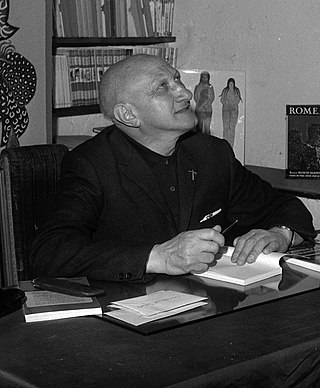Top Qs
Timeline
Chat
Perspective
Maxime Jacob
French composer and organist From Wikipedia, the free encyclopedia
Remove ads
Maxime Jacob, or Dom Clément Jacob, (13 January 1906 in Bordeaux – 26 February 1977 in En-Calcat Abbey, Dourgne, Tarn) was a French composer and organist.
Biography
Jacob studied at the Paris Conservatory with Charles Koechlin and André Gedalge; an admirer of Darius Milhaud and Erik Satie, he was a member of the École d'Arcueil, a group of young composers sponsored by Satie after his rupture with his previous group of protégés, Les Six. Other members of this short-lived group included Henri Cliquet-Pleyel, Henri Sauguet and Roger Désormière.
In 1927, Jacob worked with Antonin Artaud at the Théâtre Alfred Jarry composing the score for his production of Ventre brûlé; ou La Mère folle (1927).[1]:252
In 1929, Jacob converted from Judaism to Catholicism (influenced by Jacques Maritain) and became a Benedictine monk at En-Calcat Abbey.[2] He would go on to study organ with Maurice Duruflé, as well as Gregorian chant.
Jacob also published two books, L'art et la grâce (1939) and Souvenirs a deux voix (1969).
In the English-speaking world, his hymn tune "Living God" in 77.77 meter with 77.77 refrain, used for I Received the Living God (J'ai reçu le Dieu vivant),[3] is well known.
Remove ads
Notes
Works
Further reading
Wikiwand - on
Seamless Wikipedia browsing. On steroids.
Remove ads

